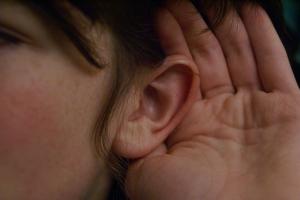This post is drawn from the book How to Have Power and Confidence in Dealing With People.
If you haven’t seen the video on the book yet, click here
We all have been in situations where we felt extremely heard. This was as much a function of the person listening as it was us talking. The act of listening is exactly that, an act. If you or I choose to listen in anything but an active way we do ourselves and the person we are in conversation with a disservice.
According to Les Giblin there are 7 ways to practice effective listening. Yet some individuals may still wonder why listening is such an imperative habit to develop. In the words of Supreme Court Justice Oliver Wendell Holmes, quoted on pg. 97 of the book,
To be able to listen to others in a sympathetic and understanding manner is perhaps the most effective mechanism in the world for getting along with people and tying up their friendship for good.
Here are the seven habits of highly effective listeners. It is worth pointing out that none of these will help you without implementation, so next time you’re talking with someone try one of the following that you don’t normally practice and see how it works!
- Look. The habit of eye contact shouldn’t need too much explanation. Perhaps if you think back to a time when you were talking with someone and they wouldn’t meet your gaze. Did you feel a bond of trust with that person? Did they convince you of their position? Our eyes are “the window to our souls” and a point of deep connection
- Deep Interest. The process of listening is not simply a blank look on your face with a dead eye glare fixated on bridge of the other person’s nose so they think you’re listening. You may be able to think 3 times faster than the other person can talk but you can take the time to nod along with things you agree with, laugh at jokes, smile at stories, etc.
- Lean. Think back to the classic picture of Christmas Eve with all the kids gathered around the fireplace to listen to a story by a grandparent. Were any of those kids lounging back gazing off into the middle distance? Lean in when you’re interested, it signals anticipation to the talker.
- Questions. The practice of asking questions shows that you’re thinking about what is being said. In fact, thinking IS asking questions. (inner dialogue, “is thinking really asking questions?” …yes. 🙂 )
- Tell Me More About That. This one comes directly from Dr. Jeff Myers and expands on the habit quoted in the book of “Don’t interrupt; instead ask him to tell more” People are subtly complimented when you listen to them, and they are doubly complimented when you demonstrate your interest enough to draw them out.
- Subject. When listening, don’t simply wait your turn to talk and change the subject. Exercise your patience muscle and stick to their subject.
- Use their words to get your point across. If you stick to the first 6 habits you’ll remember a number of points from what your companion was saying. Repeat them back or even use their phrases and ideas to introduce some of your own.
Hope you’ve enjoyed listening to me expound on listening! Comment below how using these habits work for you or if you have any thoughts on the same topic.
P.S. In the video I promised to explain a story from Middle School. What had happened was I was asked to demonstrate a stroke in front of the whole swim team in the lane next to a 4th year veteran who demonstrated the same stroke. When we both and swam the 50 yards my coach said, “Jon you’re doing great for a 1st year swimmer.” They went on to point out in front of the team a couple things I was doing different than the other guy who was doing better than I was and I wanted to sink to the bottom of the pool. My guess is that their purpose was to help the team but it really made me feel small. I would recommend not taking that tact when dealing with others 😉
Follow me on Twitter! https://www.twitter.com/jondelange



Leave a comment